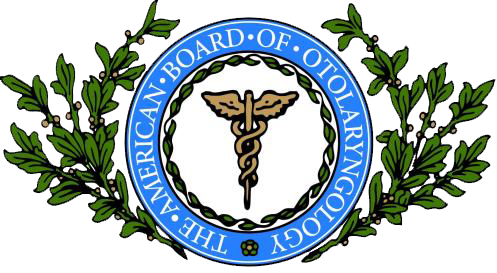
Deviated Septum
Deviated Septum – About
The nasal septum is the thin wall dividing the nasal cavity into two passages. The ideal nasal septum is exactly midline, separating the left and right sides of the nose into passageways of equal size. About 80 percent of all nasal septums are off-center, a condition that is generally not noticed. A “deviated septum” occurs when the septum is severely shifted away from the midline. The most common symptom from a badly deviated or crooked septum is difficulty breathing through the nose. The symptoms are usually worse on one side, and sometimes actually occur on the side opposite the bend. In some cases the crooked septum can interfere with the drainage of the sinuses, resulting in repeated sinus infections. In many people, the nasal septum is displaced — or deviated — making one nasal passage smaller.
Treatment of nasal obstruction may include medications to reduce the swelling or nasal dilators that help open the nasal passages. To correct a deviated septum, surgery is necessary.
Septoplasty is the preferred surgical treatment to correct a deviated septum. This procedure is not generally performed on minors, because the cartilaginous septum grows until around age 18. Septal deviations commonly occur due to nasal trauma.
Deviated Septum – Diagnosis
Your health care professional can diagnose a deviated septum during the physical examination. Usually a bright light and an instrument that can help visualize the nasal septum by opening the nostril (nasal speculum) will help make the correct diagnosis. Some deviated septums are deep in the nose and may require further evaluation in the office with an endoscope a long tube-shaped scope with a bright light at the tip).
The doctor may also look at your nasal tissues before and after applying a decongestant spray.
If your doctor is not an otolaryngologist (ear, nose and throat specialist) and treatment is deemed necessary, you may be referred to a specialist for further consultation and treatment.
Deviated Septum – Treatment
Initial treatment of a deviated septum may be directed at managing the symptoms of the tissues lining the nose, which may then contribute to symptoms of nasal obstruction and drainage. Medications only treat the swollen mucus membranes and won’t correct a deviated septum. Your doctor may prescribe:
Decongestants. Decongestants are medications that reduce nasal tissue swelling, helping to keep the airways on both sides of your nose open. Decongestants are available as a pill or as a nasal spray. Nasal sprays should be used with caution. Frequent and continued use can create dependency and cause symptoms to be worse (rebound) after you stop using them. Decongestants have a stimulant effect and may cause you to be jittery as well as elevate your blood pressure and heart rate.
Antihistamines. Antihistamines are medications that help prevent allergy symptoms, including obstruction and runny nose. They can also sometimes help nonallergic conditions such as those occurring with a cold. Some antihistamines cause drowsiness and can affect your ability to perform tasks that require physical coordination, such as driving.
Nasal steroid sprays. Nasal corticosteroid sprays can reduce inflammation in your nasal passage and help with obstruction or drainage. It usually takes from one to three weeks for steroid sprays to reach their maximal effect, so it is important to follow your doctor’s directions in using them.
Surgical repair (septoplasty)
Sometimes symptoms of a deviated septum can be relieved with medications. If medicine alone doesn’t offer adequate relief, a surgical procedure called septoplasty may be needed to repair a crooked septum and improve breathing.
Septoplasty is the usual way to repair a deviated septum. During septoplasty, your nasal septum is straightened and repositioned in the center of your nose. This may require your surgeon to cut and remove parts of your septum before reinserting them in the proper position.
The level of improvement you can expect with surgery depends on the severity of your deviation. Symptoms due to the deviated septum — particularly nasal obstruction — often completely resolve. However, any accompanying nasal or sinus conditions affecting the tissues lining your nose — such as allergies — can’t be cured by surgery alone.
Conditions Treated
Follow us


Your Health Starts Here
"*" indicates required fields
